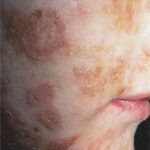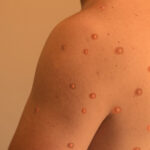Complicated skin and skin structure infections (cSSIs) are serious conditions that affect the skin and underlying tissues. These infections can range from mild to life-threatening and often require prompt medical intervention. In this comprehensive guide, we delve into the causes, symptoms, risk factors, and effective treatments for cSSIs, providing a thorough understanding of this important health issue.
What are Complicated Skin and Skin Structure Infections (cSSIs)?
Complicated skin and skin structure infections refer to infections that occur in the deeper layers of the skin, such as the dermis, subcutaneous tissue, or even muscle. These infections often involve a combination of bacteria and may spread to adjacent structures, making them more complex to treat. cSSIs are generally more severe than uncomplicated infections and may require hospitalization or more aggressive medical management.

Types of cSSIs
There are various types of cSSIs, each characterized by the severity and extent of the infection:
- Cellulitis: A common bacterial infection that affects the deeper layers of the skin. Cellulitis can spread rapidly and cause redness, swelling, and pain.
- Abscess: A localized collection of pus that forms within the tissue as a result of infection.
- Necrotizing Fasciitis: A rare but extremely serious infection that rapidly destroys the tissue and can be fatal if not treated promptly.
- Wound Infections: These occur when a wound, whether surgical or traumatic, becomes infected and shows signs of delayed healing.
Causes of Complicated Skin and Skin Structure Infections
Complicated skin infections are primarily caused by bacteria, although fungi and viruses can also be involved. The most common bacteria responsible for cSSIs include:
- Staphylococcus aureus (including Methicillin-resistant Staphylococcus aureus – MRSA): A major cause of skin infections, especially in healthcare settings.
- Streptococcus pyogenes: A common bacterium associated with cellulitis and necrotizing fasciitis.
- Enterococcus species: Sometimes involved in wound infections, particularly in people with compromised immune systems.
- Gram-negative bacteria: These can also cause infections, particularly in more severe cases.
In some cases, a combination of different bacteria may be responsible for the infection, making the condition even more complicated to treat.
Risk Factors for Developing Complicated Skin Infections
Several factors can increase the risk of developing complicated skin and skin structure infections. These include:
- Chronic medical conditions: Diabetes, obesity, and immune system disorders can predispose individuals to infections.
- Poor hygiene: Lack of proper skin care and hygiene can lead to bacterial colonization and subsequent infection.
- Trauma or injury: Cuts, scrapes, burns, or surgical wounds are susceptible to becoming infected, especially if not properly cleaned and treated.
- Presence of foreign bodies: Devices like catheters, prosthetics, or surgical implants can provide a surface for bacteria to adhere to, increasing the risk of infection.
- Immunosuppressed states: Individuals undergoing chemotherapy, on immunosuppressive drugs, or with conditions like HIV/AIDS are at higher risk.
Symptoms of Complicated Skin Infections
The symptoms of cSSIs can vary depending on the type and severity of the infection. However, common signs include:
- Redness and swelling: The affected area may appear inflamed, with a noticeable change in color and warmth.
- Pain or tenderness: The skin may become increasingly painful to the touch as the infection progresses.
- Pus or drainage: Abscesses or infected wounds often produce pus, which may drain from the affected site.
- Fever and chills: As the infection spreads, systemic symptoms like fever and chills may develop, indicating a more serious condition.
- Necrosis: In severe cases, tissue death or blackened skin may be seen, particularly in necrotizing fasciitis.
Diagnosis of Complicated Skin and Skin Structure Infections
To properly diagnose a cSSI, healthcare providers will assess the patient’s symptoms, conduct a physical examination, and may recommend laboratory tests. These tests can include:
- Blood cultures: To identify any bacterial or fungal pathogens in the bloodstream.
- Wound cultures: A sample from an abscess or infected wound is taken to determine the specific bacteria causing the infection.
- Imaging studies: X-rays, CT scans, or MRIs may be used to assess the extent of the infection, especially in cases like necrotizing fasciitis where deeper tissue involvement is suspected.
Treatment for Complicated Skin and Skin Structure Infections
Treatment for cSSIs often requires a combination of medical interventions, including antibiotics, surgical procedures, and wound care.
Antibiotics
The cornerstone of treatment for most cSSIs is the use of antibiotics. The specific antibiotic prescribed will depend on the type of bacteria identified in the infection. For example:
- For Staphylococcus aureus (including MRSA): Common antibiotics include clindamycin, vancomycin, or linezolid.
- For Streptococcus pyogenes: Penicillin or cephalosporins are often used.
- For polymicrobial infections: Broad-spectrum antibiotics like piperacillin-tazobactam or carbapenems may be prescribed.
It is crucial for patients to complete the full course of antibiotics to avoid recurrence or the development of antibiotic resistance.
Surgical Interventions
In some cases, particularly with abscesses or necrotizing infections, surgical intervention may be necessary. Procedures may include:
- Incision and drainage (I&D): For abscesses, draining the pus can help reduce pressure and promote healing.
- Debridement: In severe cases, the removal of necrotic tissue is required to prevent further spread of infection.
Wound Care
Proper wound care is essential for recovery from skin infections. This includes cleaning the wound, applying dressings, and monitoring for any signs of worsening infection. In some cases, specialized treatments such as hyperbaric oxygen therapy or negative pressure wound therapy may be employed.
Prevention of Complicated Skin Infections
Preventing cSSIs involves a combination of good hygiene, early detection, and timely medical intervention. Some key prevention strategies include:
- Maintaining proper wound hygiene: Cleaning wounds immediately after an injury and applying antiseptics can prevent infection.
- Managing chronic conditions: Keeping diabetes, obesity, and other risk factors under control can help reduce the likelihood of infections.
- Antibiotic stewardship: Appropriate use of antibiotics to avoid resistance, as well as monitoring and preventing hospital-acquired infections, can play a critical role in reducing the incidence of cSSIs.
- Vaccination: Vaccines for conditions such as influenza or pneumococcus can help reduce the burden on the immune system, making it less susceptible to infections.

